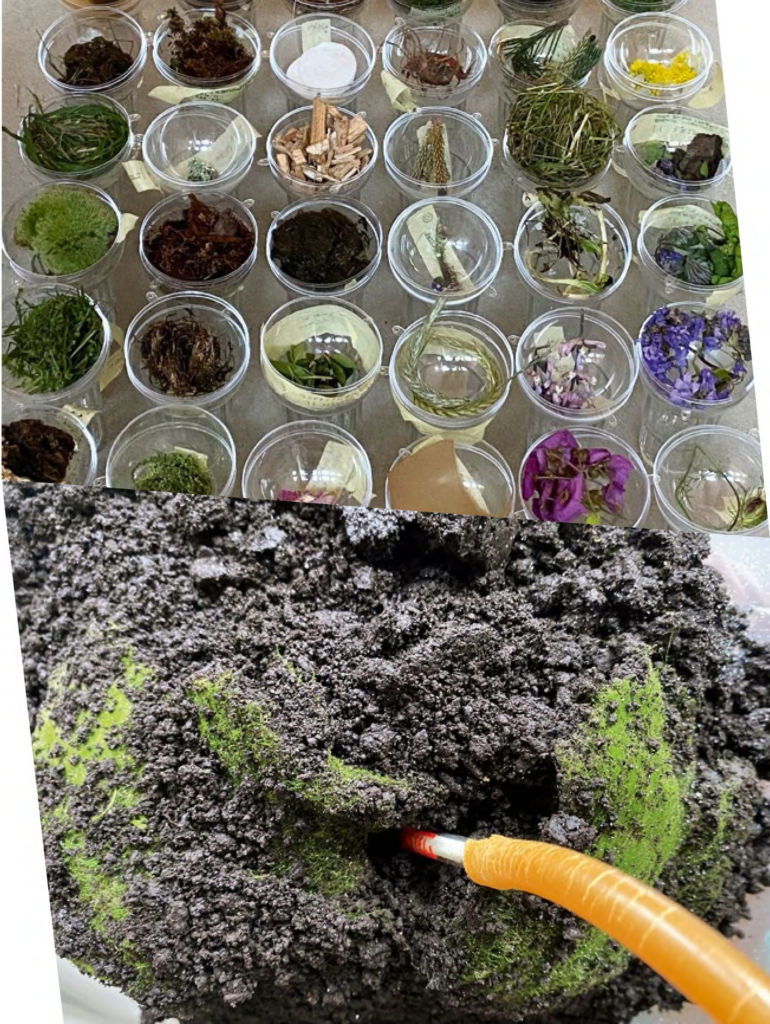Born in 1961 in Stavanger, Norway, lives and works in Berlin, Germany
IN_side_OUT_edis_NI تربة
2024
Sissel Tolaas is a smell researcher and artist who has been collecting and researching smells from around the world since 1990. With a background in mathematics, forensic chemistry, linguistics, and art from universities such as Moscow State University, the University of Oxford, and Princeton University, she has become a sought-after researcher and creator of smells. In 2004 she founded the SMELL RE_searchLab Berlin, one of the world’s largest sources for artificial smells, equipped with an arsenal of ongoing smell-related archives.
Chemical communication, the planet’s first and fundamental form of interaction, fuels Sissel Tolaas’s cross-disciplinary inquiries and extended projects. She probes the smells that underpin human-to-human connections and plant-animal communication, unraveling the complexities of olfactory interactions. For Tolaas, smell is about opening up the complex world, of which we all are a part, and to which we all contribute: air is a shared endeavor. Where there is air, there are smell molecules—and there is life. Every day, we breathe in millions of molecules that provide a wealth of information to our subconscious minds. Smell is an omnipresent form of communication deeply linked to emotions and memory. Smelling the world is different than looking at the world. Every action is the source of an emotional reaction.
Tolaas records smell molecules from their original contexts, replicates them precisely, and introduces them into specific situations or objects depending on the given content and context. Tolaas calls this the “decontextualization of smell.” This provocative approach challenges culturally ingrained notions of “good” or “bad” smells, aiming to revive the richness of sensory information and its unique potential for information, communication, education, and even healing.
For the Biennale, Tolaas has been commissioned to create a smell derived from petrichor, the distinctive, earthy smell produced when rain falls on dry soil. The smell molecule has been shown to boost levels of serotonin and norepinephrine in humans, acting in a manner similar to antidepressants. Visitors can experience Tolaas’s smell as a thread— as an invisible AIR wayfinder throughout the exhibition—introduced by mobile dispenser units. An outdoor area is dedicated to this unique molecule, inviting visitors to contemplate, rest, and share stories evoked by the smell molecule. In the Re/Search area, Tolaas presents her work on the study of the petrichor smell molecule and its scientific foundation.



